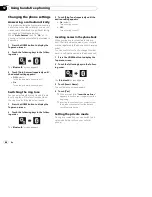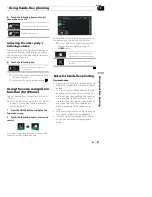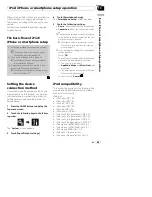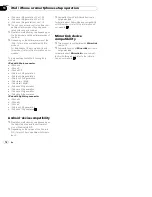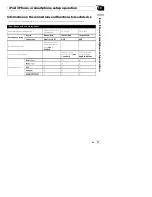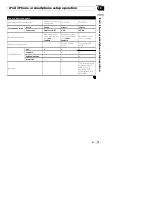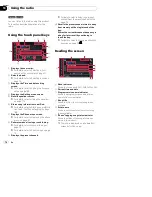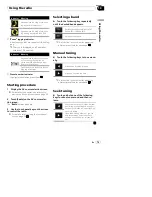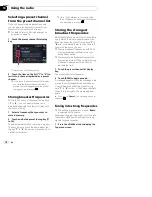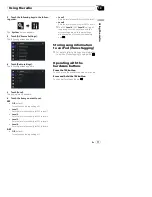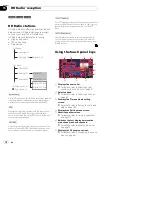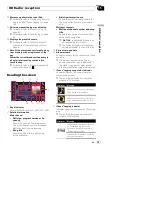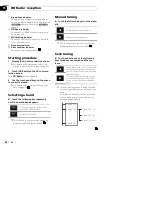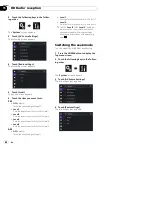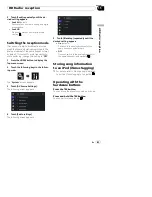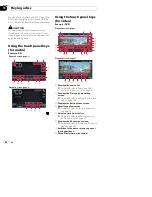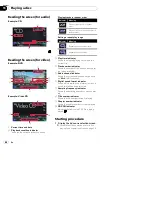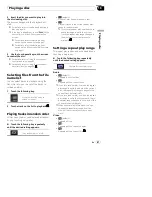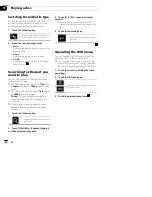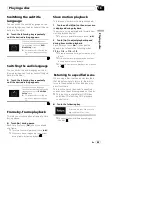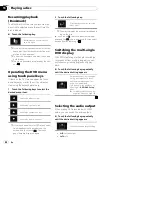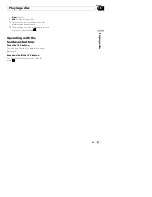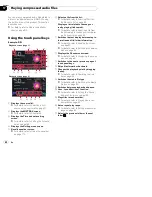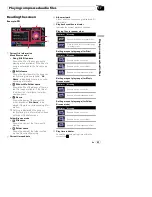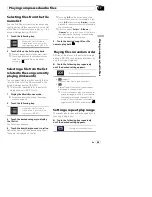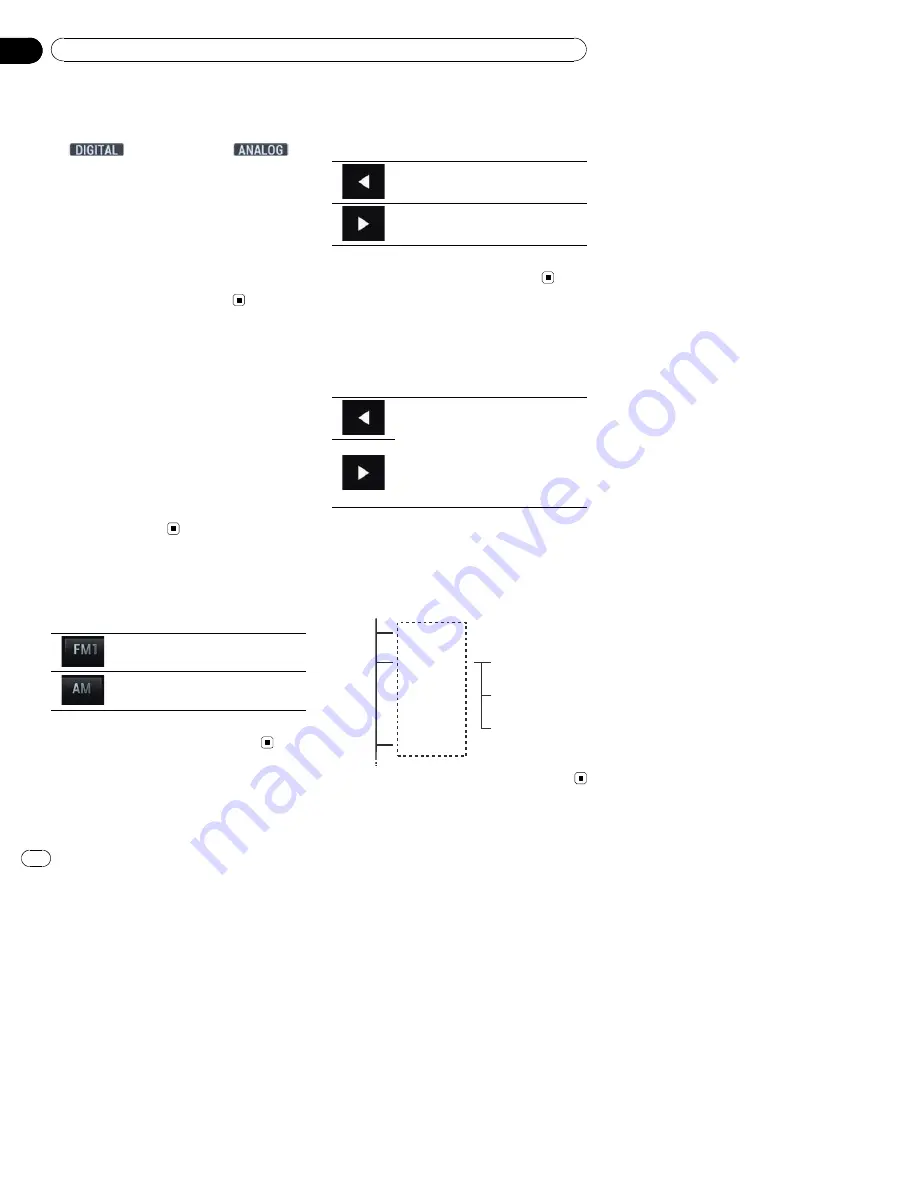
7
Signal type indicator
Shows the type of signal currently being re-
ceived. If a digital broadcast is being received,
appears. Otherwise,
appears.
8
HD Radio indicator
Shows that HD Radio station information is
being received.
9
Multicasting indicator
Shows the number of multicast channels in
the current frequency.
a
Frequency indicator
b
Preset number indicator
Shows the selected preset item.
Starting procedure
1
Display the AV source selection screen.
=
For details of the operations, refer to
Dis-
playing the AV operation screen
on page 20.
2
Touch [HD Radio] on the AV source se-
lection screen.
The
“
HD Radio
”
screen appears.
3
Use the touch panel keys on the screen
to control the radio.
=
For details, refer to
Using the touch panel
keys
on page 78.
Selecting a band
%
Touch the following key repeatedly
until the desired band appears.
Switches between the following FM
bands: FM1, FM2 and FM3.
Switches to AM band.
p
This function is convenient for preparing
different preset lists for each band.
Manual tuning
%
Touch the following keys to tune manu-
ally.
Moves down one step at a time.
Moves up one step at a time.
p
This function is convenient for preparing
different preset lists for each band.
Seek tuning
%
Touch and hold one of the following
keys for about one second and then re-
lease.
Scans frequencies until it finds a broad-
cast strong enough for good reception.
You can cancel seek tuning by touching
either key briefly.
If you keep holding either key, you can
skip broadcasting frequencies. Seek
tuning will start when you release the
key.
p
When an analog station is being received,
only analog broadcasts can be tuned up or
down.
If a digital broadcast is not being received
yet, tuning up or down seeks the next or
previous analog station.
Analog FM
Analog FM
Analog FM
Digital FM-1ch
Digital FM-2ch
Digital FM-3ch
En
80
Chapter
15
HD Radio
™
reception

